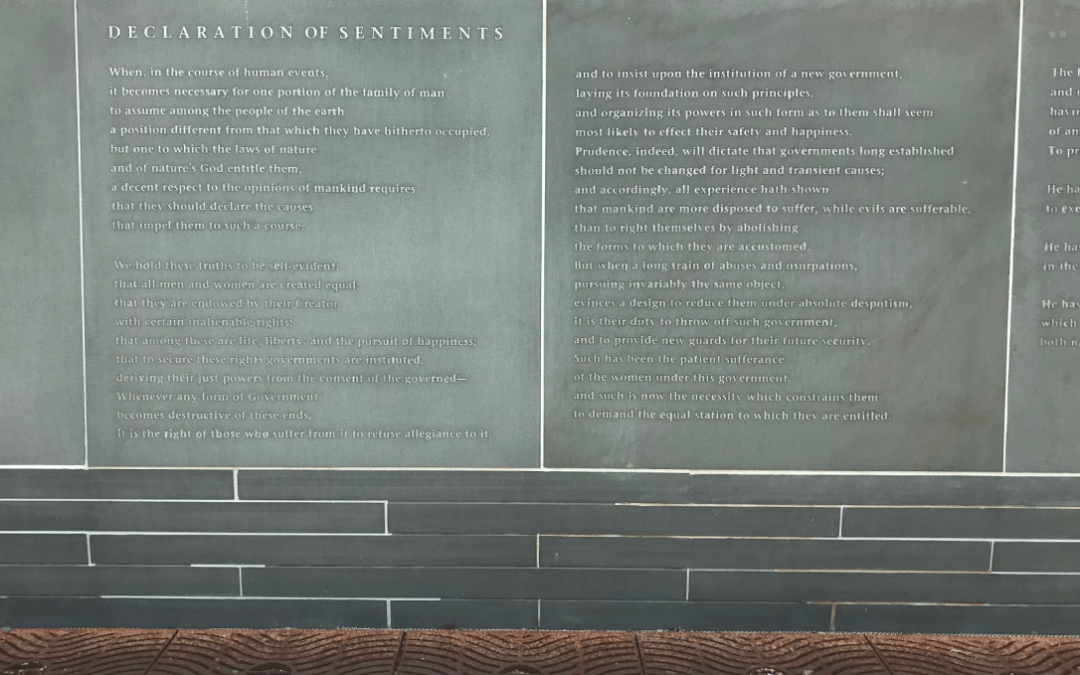By Victoria Elliott
I’m grateful to have begun my CDRIP internship!
I spent my first week at Women’s Rights National Historical Park establishing the why, when, where, and who of the First Women’s Rights Convention. I began by researching the history of Seneca Falls following the American Revolution. I learned about the effect that the Seneca River, the implementation of the canal, and the railroad had on the prosperity and development of the town. If the Erie Canal hadn’t been built, Seneca Falls had the potential to become a city as large as Buffalo or Syracuse!
I also investigated the importance of religion and religious revivals in New York. The region underwent waves of religious change, inventions, and was filled with so much religious “fire” in the Second Great Awakening that central and western New York came to be known as the Burned-over district. Greater importance was placed on the individual’s responsibility to promote public welfare. At the same time, the industrial revolution and the middle class were both developing.

Figure 2: Notice of the Seneca Falls Women’s Rights Convention published in the Seneca County Courier on July 11, 1848
These conditions (along with many, many others) caused the First Women’s Rights Convention on July 19th and 20th, 1848 to occur when and where it did.
Since the close of my first week I’ve been researching the importance of the abolitionist movement and its relationship to the women’s rights movement, Seneca County’s specific links to the Underground Railroad, and African American abolition and women’s rights activists.
In the coming weeks I look forward to continuing my investigation of the early women’s rights movement in both its achievements and its failings.


